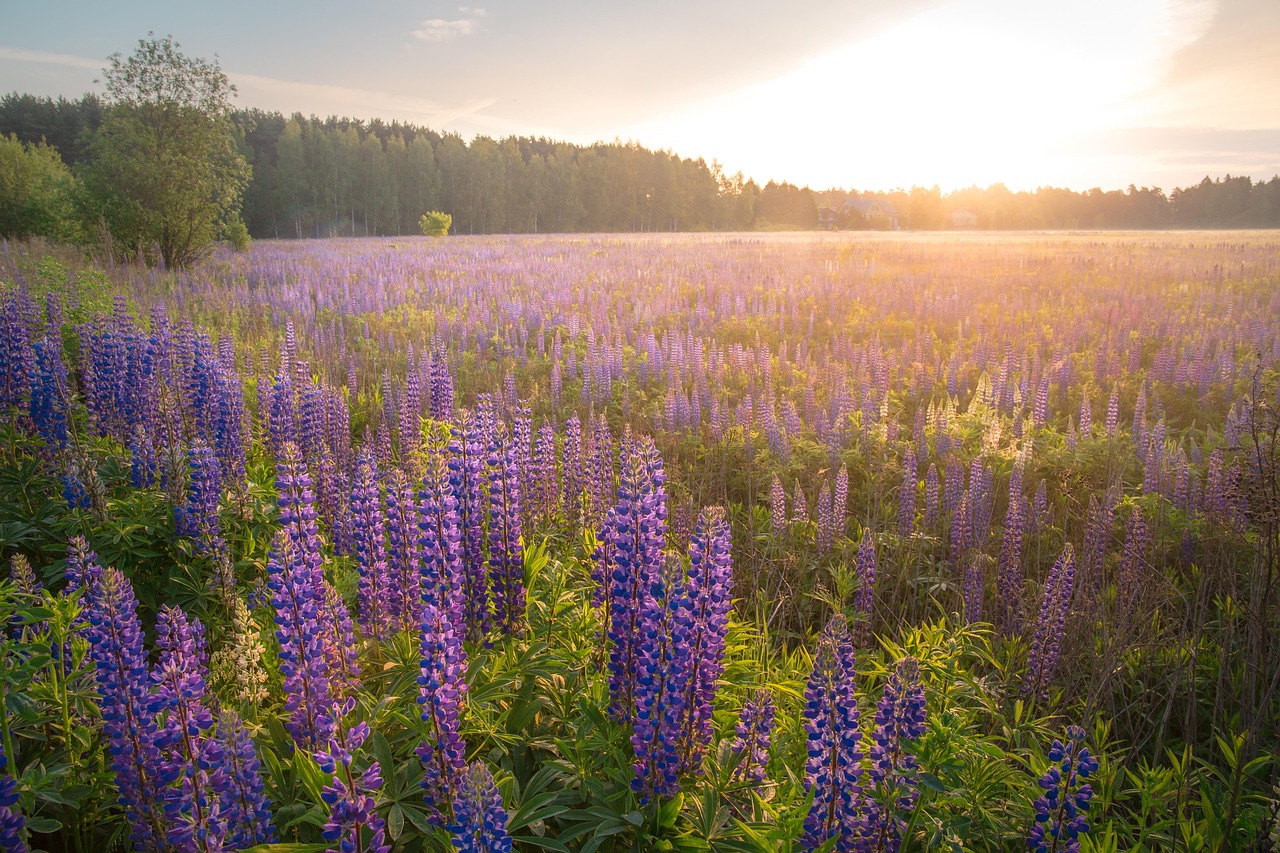
Lupine
Lupinus spp.
Basic Information
🌿 Family: Fabaceae🗺️ Zone: 3-8
Other Names:
- Bluebonnet
- Wolf's-bane
🌡️ Ideal Temperature : 60°F (15°C)°F – 70°F (21°C)°F
🔥 Heat Tolerance: Up to 85°F (29°C)°F
❄️ Cold Tolerance: Down to -40°F (-40°C)°F
🌱 Type: Perennial
Layers
- Sub-canopy
- Shrub
- Ground
Functions
- Edible
- Nitrogen Fixer
- Pollinator
- Wildlife Attractor
- Erosion Control
- Ornamental
Pests
Description
Lupines are herbaceous perennials known for their tall, spiky flower clusters that come in a variety of colors, including blue, purple, pink, and white. They typically grow between 0.3 to 1.5 meters (1 to 5 feet) in height, with some species reaching up to 6 meters (20 feet). The plants have deeply divided, palmate leaves and produce seed pods after flowering. They thrive in cooler climates and prefer well-drained, sandy soils. Lupines are also known for their nitrogen-fixing ability, enriching the soil in which they grow. Propagation is commonly done through seeds, which should be scarified before planting. Harvesting of seeds occurs in late summer when the pods turn brown and begin to split.
Purpose
- **Edible:** Certain species, particularly the Sweet Lupine varieties, produce seeds that are consumed as lupin beans, a traditional snack in Mediterranean cuisine. However, many wild lupines contain toxic alkaloids and should not be consumed without proper processing.
- **Nitrogen Fixer:** Lupines have symbiotic relationships with soil bacteria that fix atmospheric nitrogen, improving soil fertility for surrounding plants.
- **Pollinator:** The vibrant flowers attract bees, butterflies, and hummingbirds, enhancing pollination in the area.
- **Wildlife Attractor:** Beyond pollinators, lupines provide habitat and food for various insects and animals, contributing to local biodiversity.
- **Erosion Control:** Their deep root systems help stabilize soil, making them useful in preventing erosion on slopes and disturbed sites.
- **Ornamental:** With their striking floral displays, lupines are popular in gardens and landscapes for aesthetic purposes.